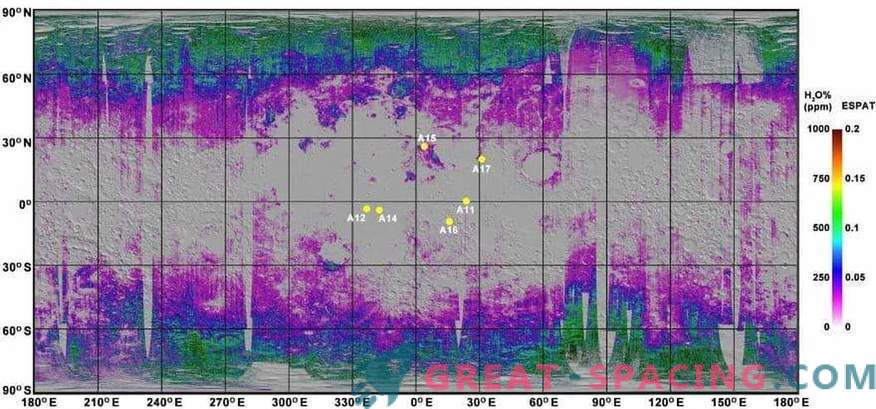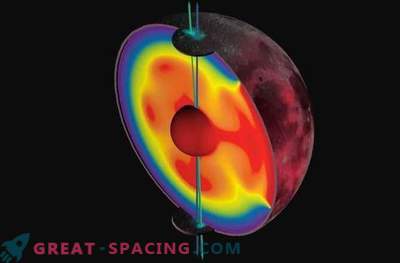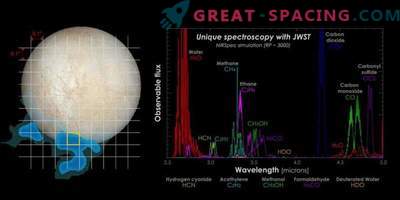
Scientists from Brown University created the first quantitative map of water and its chemical building blocks. This study will be useful for future lunar colonists.
In 2009, we found out that there are water and hydroxyl molecules on the Earth’s satellite. Now the researchers decided to form a detailed map indicating the location and quantity.
Water signatures are present throughout almost the entire territory. The number increases with the approach to the poles. The maximum water concentration reaches 500-750 ppm in high latitudes. For you to understand, this is many times less than in arid terrestrial deserts. But it is still there.
The map is important, because with its help we will find out where to look for water, how much water it is and whether it is worth it to spend energy on extraction. The source is hinted distribution. Basically it is homogeneous with a decrease in concentration towards the equatorial line. It is believed that the whole thing in the solar wind. Continuous proton bombardment is capable of forming hydroxyl and molecular water.

The new map displays the volume of water concentrated in the lunar soil. The amount increases closer to the poles, hinting that most of the water came from the solar wind.
But there are exceptions. High concentrations are noted in volcanic deposits that can come from deep mantle.
The study also shows that the water concentration changes during the lunar day at latitudes below 60 degrees: in the morning and in the evening it is wet, and at noon there is a drought. The exact mechanism of oscillation has not been identified, but this suggests that the process of water formation is happening right now.
But the map still can not be complete. The fact is that the lunar mineralogical map displays only those places where light is reflected from the surface. It turns out that the shaded areas are still mysteries. It is believed that many of them may contain large amounts of water ice. It is also not clear how deeply water seeps into the soil.
But we still have a good start, and future colonists will not work blindly.











































